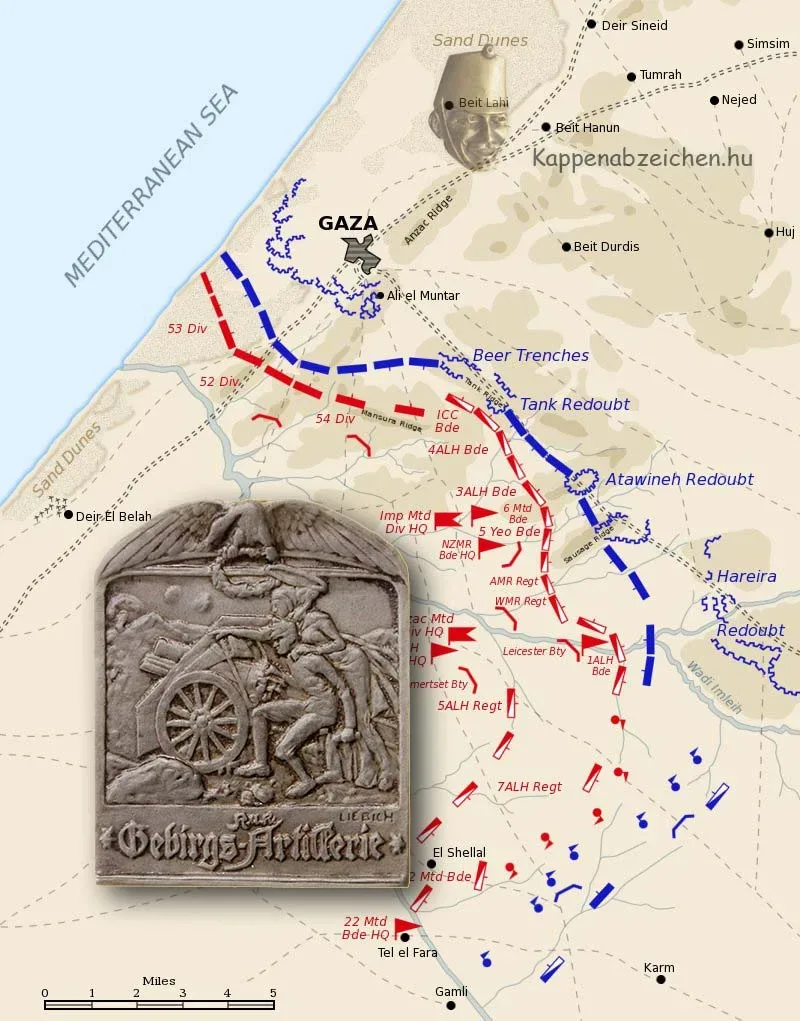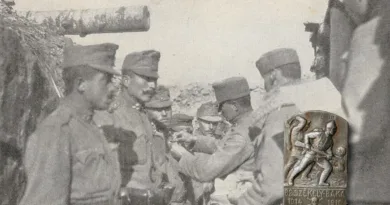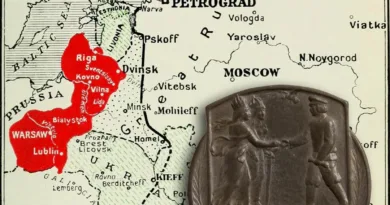April 1917: Second battle of Gaza
In December 1916, the Egyptian corps of the British forces repelled the second offensive launched by the Turks against Suez and launched a counterattack. As a result, the front was pushed back to the former border line and the Sinai Peninsula was taken into their possession. The main line of Turkish defense then stretched southeast from the coastal city of Gaza to Beer-Sheba. Further south, raiding parties clashed in desert conditions.
I have previously reported here on the first British attack on Gaza launched in March 1917. In April, the British tried again with significantly reinforced troops. Eight Mark I tanks were also used in the attack, aerial reconnaissance and airstrikes also helped the preparations. This time, the main direction of the attack unfolded south of the city of Gaza in the direction of Beer-Sheba. But an attack was also launched against von Marno’s Austro-Hungarian mountain howitzer division on Al-Muntar hill. In preventing this, on April 19, the Monarchy’s artillery supporting the infantry again played a prominent role. The British also fired gas grenades at the mountain and the machine gun nests located in the wooded part at its foot. From the sea side, 13 warships also took part in the artillery preparation of the attack.

On the 19th, the British managed to wedge themselves into the Turkish positions, but in the process they suffered such heavy losses that the counterattack launched the next day pushed them back to their starting positions. The mountain howitzer battery located on Djebel Muntar had to be defended again in close combat against the enemy advancing to the battery position. However, the biggest loss was caused by one of the cannons exploding during the battle, killing several gunners. The other heavy artillery division, consisting of two 10.5 cm howitzers, suffered even greater losses. Both of its guns were hit directly, killing most of the crew. The main attack launched south of Gaza was not unsuccessful either, neither the raiding parties in the desert could achieve results. According to British sources, their own losses exceeded 6,000 people, of which more than 500 were dead and 4,300 wounded. Turkish, German and Austro-Hungarian losses were 400 dead and 1,400 wounded. The Turkish troops came out of the battle morally strengthened.

Only a few insignia of the Austro-Hungarian contingent in Palestina are known, most of which I have already presented. Therefore, I am now including a generic mountain gunner badge with this post. This could also be worn by the artillerymen fighting alongside Gaza, as the ruler sent two mountain artillery units there. The tank that was destroyed could even have been their victim (the British also deployed four tanks against Gaza).




